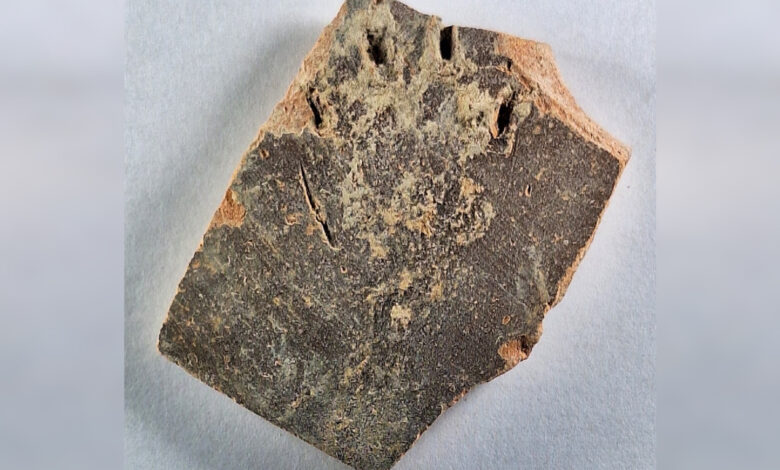The discovery of 1200-year-old cat footprints on a clay jar; The oldest work of making cat biscuits

Sometime about 1,200 years ago in Jerusalem, a small cat was passing by a fresh, wet clay jar in the pleasant sunlight when it suddenly noticed the oldest known sign of “biscuit-making” behavior, that is, pressing with its paws and kneading soft objects. He left it on the undried jar.
Now, a group of archaeologists in Jerusalem have discovered a piece of a 1,200-year-old clay jar on which a small cat’s paw print can be seen, a sign of kneading undried clay. Today, this behavior of cats is also known as making biscuits and baking bread, and it is one of the most famous and beloved habits of cats.
It seems that the little cat left its paw prints on the wet surface while passing by the urn that the potter had left to dry in the sun. The jar was still so wet that the traces of paws remained on it and in this way, a memento of a passing cat was left for history.
The cat was probably lying on the edge of the jar to sunbathe
Simon Gibson“We think the cat was not just resting, but kneading its paws, because its claws are open and there are deep marks on the surface,” Archaeologist at the University of North Carolina at Charlotte, who led the Mount Zion excavations responsible for the discovery, explained to LiveScience. It has created flowers.
Gretchen CutterThe director of the laboratory noticed the cat’s traces during the post-excavation investigations. The shape of the remains, which include part of the cat’s front paw, suggest that it may have been lying on the rim of the jar to sunbathe. The footprint of the cat’s paw is three by three centimeters, and its arm is about two by one centimeter.
“We can imagine that this cat was purring with delight as it basked in the warm Jerusalem sun,” the archaeologists said.
Cats knead objects and make biscuits for various reasons. For example, kittens stimulate the flow of milk by melodious paw pressure on the mother’s body. This behavior is also seen in adult cats, especially when they are with a human who gives them a sense of security and comfort; Because they probably associate this feeling with pleasure during their infancy. Also, it is believed that by kneading, cats also leave their scent on the bodies, animals and people they love.
read more
The 1,200-year-old jar, which has a cat’s paw print on it, was most likely used to carry liquids such as water, drinks, and olive oil in homes. Gibson explains that this jar was discovered near the summit of Mount Zion (southwest hill). During the Iron Age and the Achaemenid dynasty, the region was known as “Zion”. This discovery was associated with other pottery discovered from the Abbasid Caliphate period (from 132 to 656 AH, 750 to 1258 AD) and for this reason, researchers believe that the age of this jar also dates back to the 9th century AD.
Therefore, the cat lived during the Abbasid caliphate; A dynasty that ruled large parts of the Islamic caliphate after the Umayyads. According to Gibson, Jerusalem was part of the Islamic State, but it still welcomed Jews, Christians and, of course, cats.









